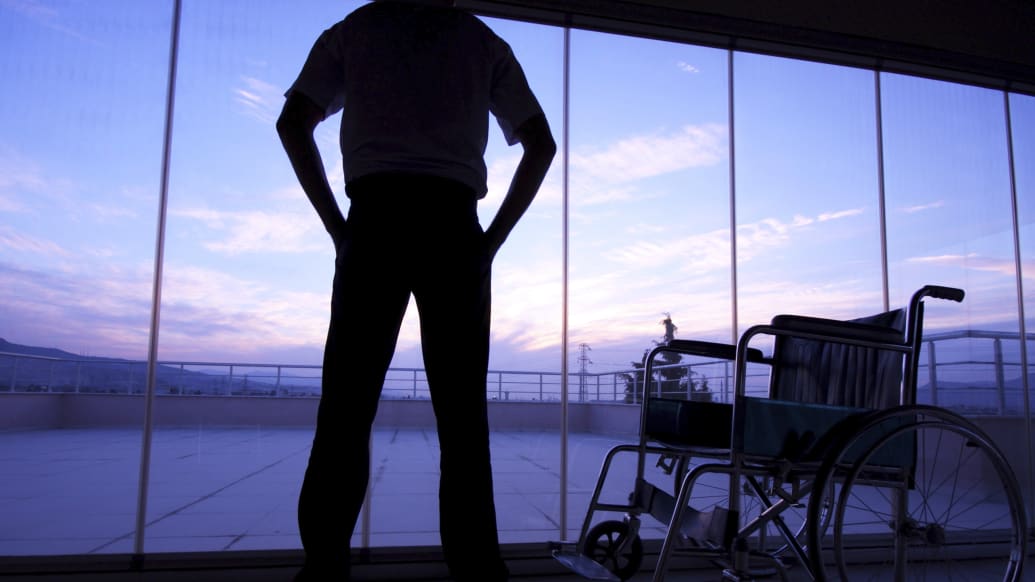Superman, paralyzed. Violently thrown from his horse, actor Christopher Reeve, renowned for his role as the Man of Steel, fractured his first and second cervical vertebrae and sustained a crippling spinal cord injury (SCI) in 1995. Instantly, a broken neck incapacitated an American role model, and no doctor on the planet could help. Though Mr. Reeve passed away in 2004, his dream of helping SCI patients walk again lives on. His foundation provides generous support for counseling, education, activism, and research.

The classic victim of SCI is a young man, with over 80% of injuries occurring in males and nearly half of all injuries occurring between ages 16 and 30. It’s estimated that approximately 273,000 individuals are currently living with SCI in the U.S., with roughly 12,000 new cases each year. These injuries are most often seen in car accidents (35.6%), falls (28.5%), acts of violence (14.3%), and sports (9.2%). SCI can hijack a young person’s future in an instant, and direct medical expenses alone add up to $2 million over the course of a patient’s lifetime.
Now, faster than ever, an important subpopulation of SCI patients is emerging: men and women of the United States Military. Given the risks inherent to combat, military personnel face significant challenges from spinal injury. A 2012 study found that in over 5,400 deceased service members who passed away during deployment to Iraq or Afghanistan, roughly 1 out of every 7 suffered from a SCI. There are even more service members that live with SCI everyday.
The struggle to develop headway in the treatment of SCI continues. In 2011, a group from the University of Louisville reported on a new strategy for therapy. The premise of the therapy was to take patients who had suffered a “motor complete” SCI, which means the patient is paralyzed from the level of their SCI and below, and combine rigorous physical therapy with electrical stimulation of the spinal cord. The procedure for spinal cord stimulation is performed by neurosurgeons around the world for other diseases, like chronic pain. Here, it was used to stimulate function.
Incredibly, electric stimulation and a dedicated physical rehabilitation regimen enabled a select number of previously wheel chair bound, motor complete patients to stand for more than four minutes. Dr. Susan Harkema, the principle investigator, and her colleagues, recapitulated the initial result in their most recent publication, a fortuitous finding as Harkema expected to study nerve pathways and did not anticipate generating movement. This finding—that direct electrical stimulation can enable voluntary moment in patients who were thought to be completely paralyzed—holds promise for individuals who suffer from SCI. Currently, the stimulator works on one leg at a time, and thus cannot be used to restore walking.
Harkema’s research falls into the field of neurostimulation and neuroprosthetics. The concept is to use a device to recover an ability that was controlled by neurons (in Harkema’s case, voluntary motor activity). For patients who have lost some portion of a limb, such as a hand or lower leg, another new type of prosthetic—an implantable myoelectric sensor (IMES) system—holds promise. It places sensors inside the patient’s remaining limb, allowing users to use their own brain signals to control the new artificial limb. So far, research suggests that the degree of precision control is fabulous, and continues to improve. Not all patients are candidates for IMES though; patients need to have some electric signaling left in the remaining limb for the device to work.
The concept of neuroprosthetics can easily conjure ideas of science fiction, and many of the other leading technologies aiming to heal SCI seem to be from the future. In stem cell based approaches, researchers hope to use special cells that haven’t turned into a specific tissue type. They’d be injected into damaged spinal cord and develop into neurons that bridge over an area of damaged spinal cord with new, fresh cells. Another strategy to restore walking is to use an exoskeleton. An external body suit senses changes in pressure from the user and imitates healthy motions to help the user perform motor movements.
It is no coincidence that the strategies striving to solve SCI are futuristic. There is immense complexity in the nervous system’s signals to and from muscles that give rise to motor control. SCI challenges medical researchers and engineers to push the limits of their understanding, and advances such as Dr. Harkema’s should and must be noted as victories.
But more research and further inquiry are critical to better understand the mechanisms of brain and spinal injury. Only then will we find a therapeutic solution that fully restores autonomy to those who have been robbed of independence.

